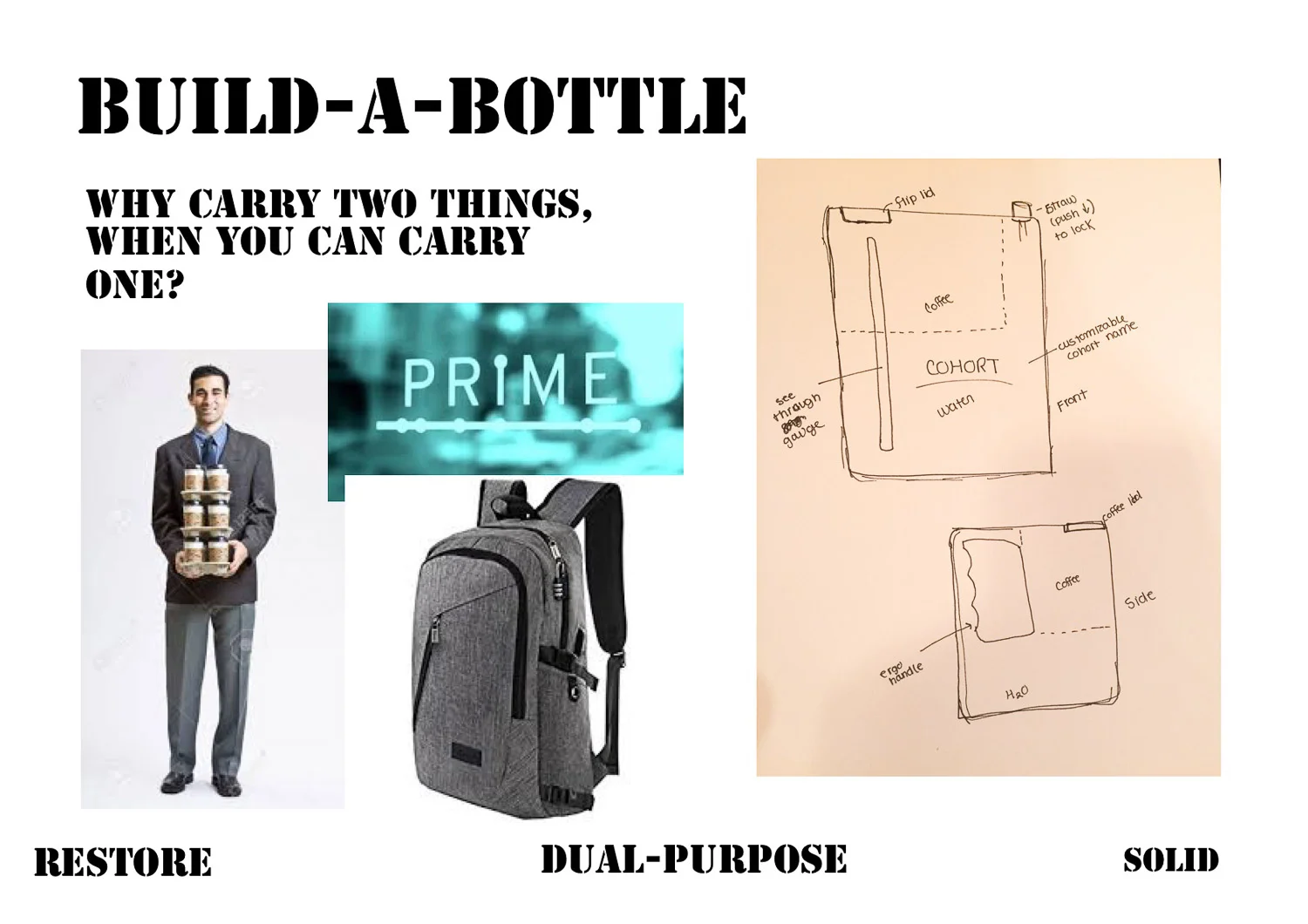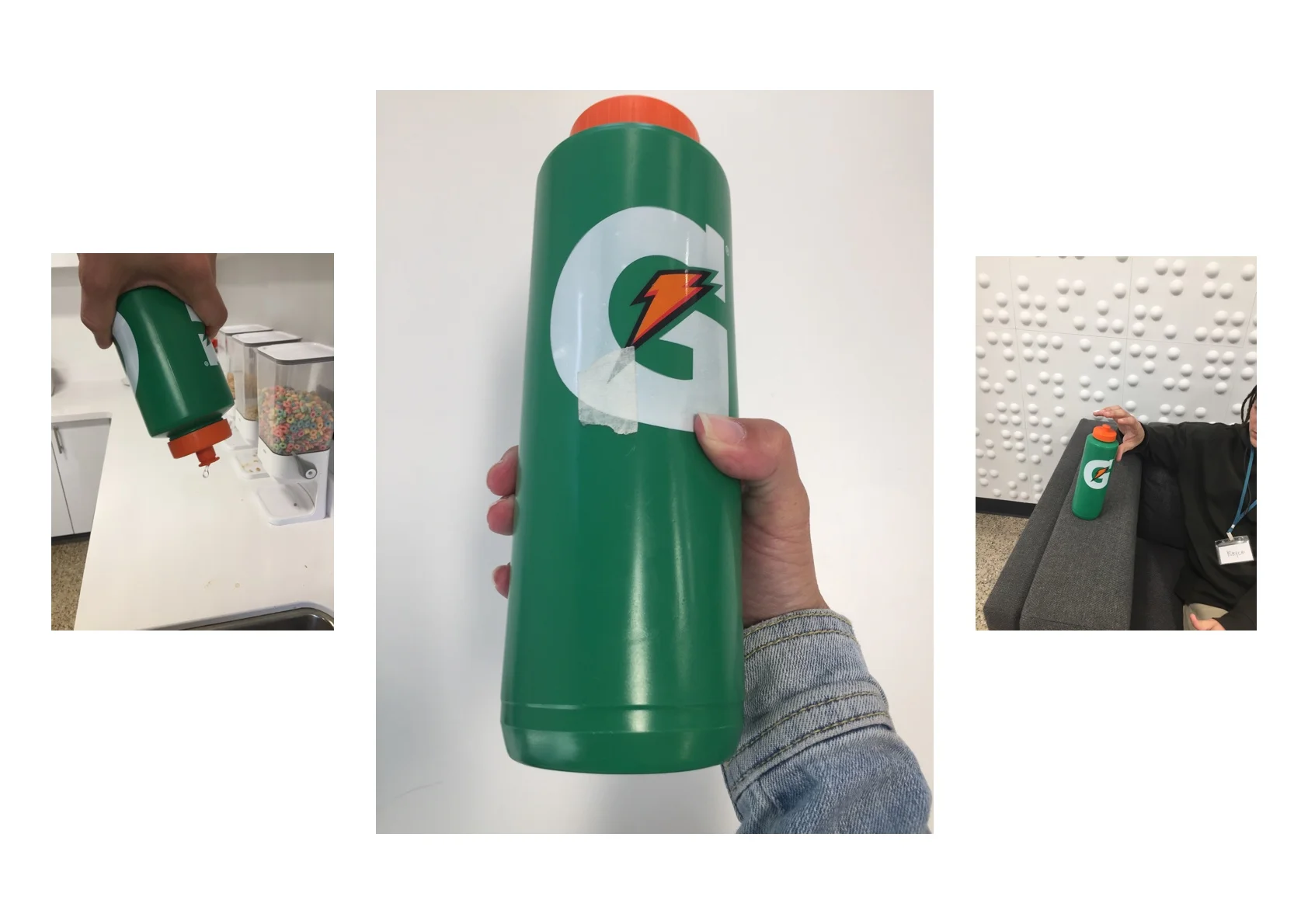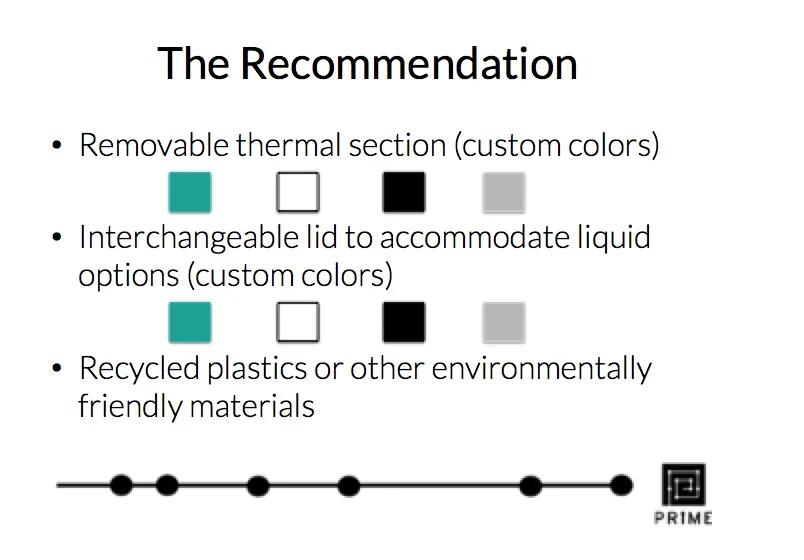Build-A-Bottle
A bottle built by you, for you.
Challenge:
Prime Digital Academy provides a water bottle as a welcome gift to its new full-stack students. The bottle is being discontinued and students report the current bottle is unusable and impersonal. Propose a meaningful and usable substitute.
Approach:
Build-A-Bottle provides a personal, portable solution for students basic hydration needs.
Fly-on-the wall (observation) | Heuristic Analysis | Concepts | Prototyping | Survey | Interview | Directed Storytelling | Touchstone tour |
Pen & Paper | Sketch | Wire | Drill | Glue | Plastic Containers | Plastic Lid | Scissors | Exacto-knife
What Fuels Primers? (The Research)
Students at Prime are non-stop, go-getters and need a meaningful beverage replacement that will keep up with their hectic pace and adapt to their days of hunching and crunching over computers. Fueling their days with a mix of beverages (hot, cold, caffeinated, non-caffeinated) the existing welcome gift provided by Prime, just won't do. The false-sealing feature of the current water bottle will have those solo projects reading "Game Over". Coupled with a constant precarious transportation balancing act - the struggles the students face with the existing bottle are real.
Insights:
- Health concerns: posture and hydration - are often unnoticed by students when working
- Common objects in a Primer's life: computer, phone, ear phones, water, coffee
- Human design vs. environment: humans have up to two hands to transport items, see list of objects common objects above. Note: the math does not work out.
Build-a-bottle is born. (the conceptS & the Prototype)
Seeing these same issues emerge and re-occur on a daily basis, three water bottle design concepts were created to address at a minimum the severe usability issues discovered in the heuristic analysis:
- lack of transportability (shape, size, material),
- unstable,
- false closing nozzle
The team was also challenged to push the concept further and design towards a higher goal:
- Designing a bottle that is meaningful for the students.
The research and design team ultimately chose to move forward with the Build-A-Bottle concept. And from there, Build-A-Bottle was born (or in UX verbiage: prototyped).
*Build-A-Bottle's primary design goal was to consolidate various beverages consumed by Prime students into one container and reduce 'clutter' on desks while still retaining a critical focus on transportability, stability and spillage.
Build-a-bottle *boom* (the test)
The moment of truth: was the Build-A-Bottle a valuable concept for Prime students? Using surveys to gain insights into the beverage culture at Prime, coupled with in-person interviews (directed-story telling and touchstone tours) to dig deeper into thoughts and feelings of students and their current water bottle likes, pain points and unmet needs, the Build-A-Bottle made an excellent debut. Users expressed curiosity about the prototype (picking it up and investigating) and described the bottle as "versatile" and "universal". Based on the research findings, the recommendation was made to move forward with the concept, with a few slight modifications based off of the interview and survey results.
Rationale for the suggested modifications:
- Creating a removable thermal container will better accommodate users who are solely water drinkers
- Creating a removable thermal container in a variety of custom colors will allow students to differentiate their bottles from other students and could swap out depending on the stress level of the day (black = max, gray = high, white = moderate, green = none) further adding value on a heightened emotional level.
- Providing interchangeable lids adds to the versatility of the bottle by allowing students to bring a mix of liquids (hot/cold, cold/cold, hot/hot) and will provide an appropriate lid for drinking.
- Creating the bottle from environmentally friendly materials will tune into the subculture of environmentally conscientious students and align with their higher values.
- The ability to 'build' a bottle taps into the "IKEA effect".
"I need something physical in front of me, to remind me to drink water.” - Prime Student
Where to go from here ... (The Extension)
Before moving this concept into a hi-fidelity prototype, it is recommended to perform an additional round of research. This research proposal would consist of a Think-A-Loud Concept Test (5-8 users) coupled with an Kano Analysis (~50 users). The Think-A-Loud Concept Test will allow us to observe behavioral responses as users interact (with purpose) with the prototype. Prior research focused more on attitudinal responses and behavioral responses in hypothetical situations. To round out the research, conducting a Kano Analysis of the modified features will allow a more precise, quantifiable measurement of the value added by each feature.



